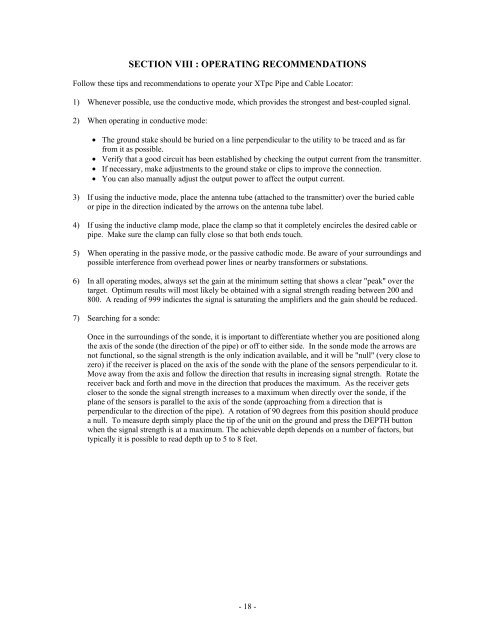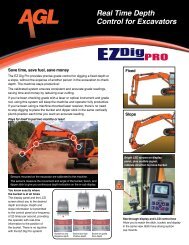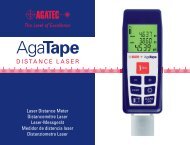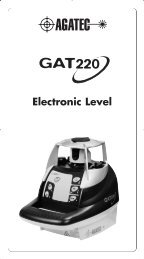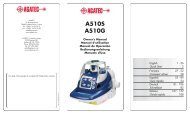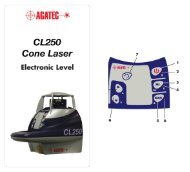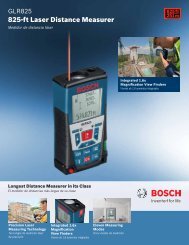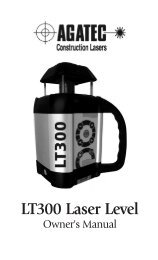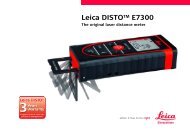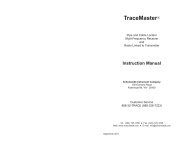Instruction Manual Model XTpc Pipe & Cable ... - EngineerSupply
Instruction Manual Model XTpc Pipe & Cable ... - EngineerSupply
Instruction Manual Model XTpc Pipe & Cable ... - EngineerSupply
Create successful ePaper yourself
Turn your PDF publications into a flip-book with our unique Google optimized e-Paper software.
SECTION VIII : OPERATING RECOMMENDATIONSFollow these tips and recommendations to operate your <strong>XTpc</strong> <strong>Pipe</strong> and <strong>Cable</strong> Locator:1) Whenever possible, use the conductive mode, which provides the strongest and best-coupled signal.2) When operating in conductive mode: The ground stake should be buried on a line perpendicular to the utility to be traced and as farfrom it as possible. Verify that a good circuit has been established by checking the output current from the transmitter. If necessary, make adjustments to the ground stake or clips to improve the connection. You can also manually adjust the output power to affect the output current.3) If using the inductive mode, place the antenna tube (attached to the transmitter) over the buried cableor pipe in the direction indicated by the arrows on the antenna tube label.4) If using the inductive clamp mode, place the clamp so that it completely encircles the desired cable orpipe. Make sure the clamp can fully close so that both ends touch.5) When operating in the passive mode, or the passive cathodic mode. Be aware of your surroundings andpossible interference from overhead power lines or nearby transformers or substations.6) In all operating modes, always set the gain at the minimum setting that shows a clear "peak" over thetarget. Optimum results will most likely be obtained with a signal strength reading between 200 and800. A reading of 999 indicates the signal is saturating the amplifiers and the gain should be reduced.7) Searching for a sonde:Once in the surroundings of the sonde, it is important to differentiate whether you are positioned alongthe axis of the sonde (the direction of the pipe) or off to either side. In the sonde mode the arrows arenot functional, so the signal strength is the only indication available, and it will be "null" (very close tozero) if the receiver is placed on the axis of the sonde with the plane of the sensors perpendicular to it.Move away from the axis and follow the direction that results in increasing signal strength. Rotate thereceiver back and forth and move in the direction that produces the maximum. As the receiver getscloser to the sonde the signal strength increases to a maximum when directly over the sonde, if theplane of the sensors is parallel to the axis of the sonde (approaching from a direction that isperpendicular to the direction of the pipe). A rotation of 90 degrees from this position should producea null. To measure depth simply place the tip of the unit on the ground and press the DEPTH buttonwhen the signal strength is at a maximum. The achievable depth depends on a number of factors, buttypically it is possible to read depth up to 5 to 8 feet.- 18 -


